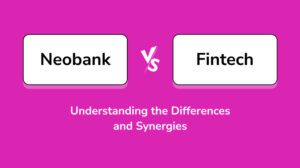In recent years, the financial landscape has undergone a significant transformation with the advent of neobanks.
These digital-first financial institutions are challenging traditional banks by offering innovative, customer-centric services.
This blog delves into a comparative analysis of neobanks and traditional banks, highlighting the strengths and weaknesses of each.
Let’s Begin!!
What Are Neobanks?
Neobanks are financial technology companies that operate exclusively online without physical branches. They leverage cutting-edge technologies and banking software development companies to provide seamless digital banking experiences.
These banks cater primarily to tech-savvy consumers who prefer managing their finances through intuitive mobile banking app development.
Traditional Banks: A Legacy of Trust
Traditional banks have been the backbone of the financial system for centuries. They offer a wide range of services, including savings and checking accounts, loans, mortgages, and investment products.
With a vast network of branches and ATMs, traditional banks provide the convenience of in-person services and a sense of security and trust built over the years.
Connect with us for Fintech Development Needs
Trusted by companies like Plaid, Yodlee, Codat.
Key Differences Between Neobanks vs Traditional Banks
Accessibility and Convenience
Neobanks
These banks provide 24/7 access to banking services through mobile apps and websites. The emphasis on user-friendly interfaces and innovative features, such as budgeting tools and real-time transaction notifications, makes banking simpler and more convenient.
Traditional Banks
While many traditional banks now offer online and mobile banking, their services often lag behind those of neobanks in terms of user experience. However, the ability to visit a physical branch for personalized service remains a significant advantage.
Cost Efficiency
Neobanks
Operating without physical branches allows neobanks to save on overhead costs, often translating to lower fees and better interest rates for customers. Many neobanks offer fee-free accounts and competitive foreign exchange rates.
Traditional Banks
The extensive infrastructure and legacy systems of traditional banks can result in higher fees for account maintenance, transactions, and other services. However, traditional banks’ broader range of products may justify these costs for some customers.
Connect with us for Fintech Development Needs
Trusted by companies like Plaid, Yodlee, Codat.
Technology and Innovation
Neobanks
By partnering with banking IT solutions providers and leveraging modern technologies like AI and machine learning, neobanks offer innovative features that enhance customer experience. Their tech-driven approach allows for rapid updates and integration of new functionalities.
Traditional Banks
Many traditional banks are investing in digital transformation, often collaborating with a Ruby on Rails development firm to upgrade their systems. However, the pace of innovation can be slower due to the complexities of modernizing legacy infrastructures.
Security and Trust
Neobanks
While neobanks invest heavily in cybersecurity measures, some customers may still feel wary about the lack of physical presence. However, regulatory frameworks and compliance with financial standards ensure a high level of security.
Traditional Banks
The longstanding reputation of traditional banks contributes to a higher level of trust among customers. Their established security protocols and physical presence provide an added layer of assurance.
Customer Service
Neobanks
Customer support is primarily provided through digital channels such as chatbots, emails, and phone calls. While convenient, some customers might miss the personal touch of face-to-face interactions.
Traditional Banks
The availability of in-branch services means customers can receive personalized assistance, which can be particularly beneficial for complex financial needs and concerns.
Neobanks for Nonprofits
An emerging trend is the development of specialized financial solutions like the non profit donation app, which neobanks can efficiently support.
These apps simplify donation processes and provide nonprofits with advanced tools for managing contributions, showcasing the versatility of neobanks in catering to niche markets.
Conclusion
The choice between neobanks and traditional banks ultimately depends on individual preferences and financial needs. Neobanks excel in offering convenience, low costs, and innovative features, making them ideal for digitally savvy users.
On the other hand, traditional banks provide a sense of security, trust, and a comprehensive range of services that many customers still value.
As the financial landscape continues to evolve, both neobanks and traditional banks will likely find ways to coexist and complement each other, leveraging advancements from banking software development companies and innovative banking IT solutions.
Whether you prefer the digital-first approach of neobanks or the established presence of traditional banks, the future of banking promises to be dynamic and customer-centric.
Connect with us for Fintech Development Needs
Trusted by companies like Plaid, Yodlee, Codat.





